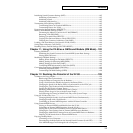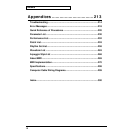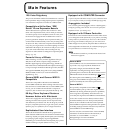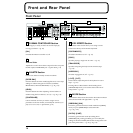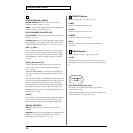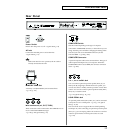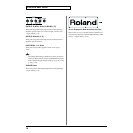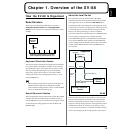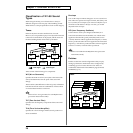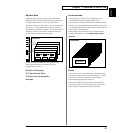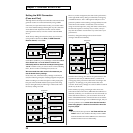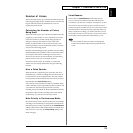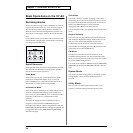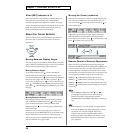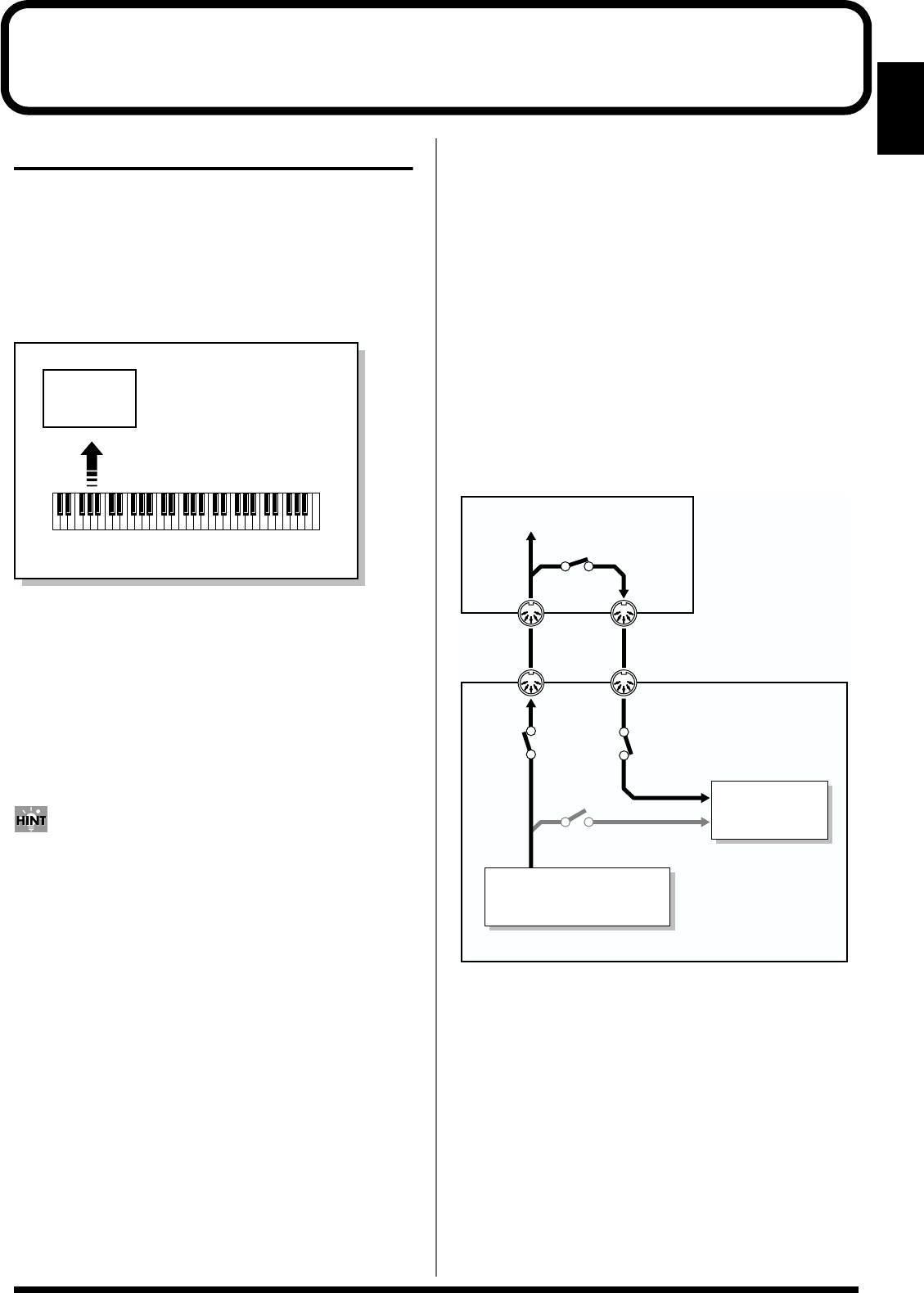
19
Chapter 1
Chapter 1. Overview of the XV-88
How the XV-88 Is Organized
Basic Structure
The XV-88 can be broadly divided into two sections: a
keyboard controller section and a sound generator
section. The two sections are connected internally by means
of MIDI.
fig.01-01.e
Keyboard Controller Section
This section consists of the keyboard, pitch bend/modulation
lever, panel sliders, and D Beam controller. It also includes
any pedals that may be connected to the rear panel. Actions
such as pressing and releasing of keys on the keyboard,
depressing a pedal, and so forth, are converted to MIDI
messages and sent to the sound generator section, or to an
external MIDI device.
When playing in Performance mode, the settings for the
MIDI connections between the keyboard controller
section and the sound generator section or external MIDI
device are made in Zone mode (p. 57).
Sound Generator Section
The sound generator section produces the sound. Here, MIDI
messages received from the keyboard controller section or
external MIDI device are converted to musical signals, which
are then output as analog signals from the OUTPUT and
PHONES jacks.
About the Local Switch
The switch that connects and disconnects the MIDI
connection between the keyboard controller section and the
sound generator section is called the Local switch. Since
essential information describing what is being played on the
keyboard won’t reach the sound generator if the Local switch
is set to OFF, the Local switch should normally be left ON.
However, if while performing you want to send that
performance data to an external sequencer as MIDI messages
to be recorded, you then perform with the externally
connected MIDI sequencer set to MIDI Thru (whereby data
received from MIDI IN is then output from the MIDI OUT
with no changes made to the data), the XV-88’s Local switch
to OFF, and the MIDI Transmit switch and MIDI Receive
switch to ON.
fig.01-02.e
In this case, the data sent over two paths, i.e., the data sent
directly from the keyboard controller section and the data
sent from the keyboard controller section via the external
sequencer, ends up being sent to the sound generator section
simultaneously. Thus, for example, even when you play a
“C” key only once, the note “C” cannot be sounded correctly,
as the sound is played by the sound generator section twice.
Keyboard Controller Section (controllers
such as keyboard, pitch bend lever, etc.)
Sound
Generator
Section
Play
MIDI OUT MIDI IN
MIDI IN MIDI OUT
XV-88
Sequencer
Recording
MIDI Thru: On
Local Switch: Off
Receive Switch: OnTransmit
Switch:
On
Keyboard Controller
Section
Sound
Generator
Section



